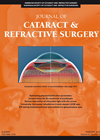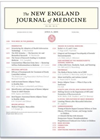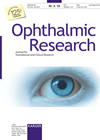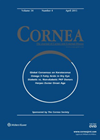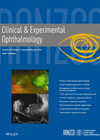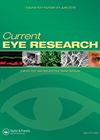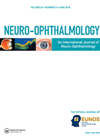
Journal Reviews archive for June 2015
Toric intraocular lens rotation related to the capsulorrhexis
The risk factors for postoperative rotation in the early post-operative period; a longer axial length, younger patients, and with the rule astigmatism as described by Miyake T et al. (JCRS 2014) in a case series of six eyes. This letter...
Closed-chamber haptic re-externalisation for posteriorly displaced sclerotomy and inadequate haptic tuck in glued posterior chamber intraocular lenses
This technique (online video http://jcrsjournal.org) emphasises the importance of both symmetrical and sufficient anterior placement of sclerotomies to externalise an adequate length of the haptics, which in turn provides good centration and stability of the intra-ocular lens (IOL). The authors...
How much money is wasted on tests prior to cataract surgery? And why?
For routine cataract surgery, numerous studies have found that preoperative testing does not contribute usefully to safety or surgical success. Despite such guidelines, tests ordered for patients prior to phacoemulsification in the US remains high. To quantify the associated costs,...
Influence of overall intraocular lens diameter on rotational stability
It has been shown that approximately one in three patients undergoing cataract surgery have >1.0D corneal astigmatism and managing this during surgery is important to achieve good refractive outcomes. One of the widely used ways of reducing preoperative astigmatism during...
Tear film thickness after treatment with artificial tears in patients with moderate dry eye disease
In recent years artificial tear drops addressing tear film osmolarity have come onto the market. Increased tear evaporation and reduced tear volume results in tear hyperosmolarity. This triggers an inflammatory process leading to apoptosis of goblet and epithelial cells. Trehalose,...
Oral omega-3 fatty acid treatment for dry eye in contact lens wearers
This study evaluates the effect of dietary omega-3 fatty acid supplementation of dry eye symptoms, tear film tests, and conjunctival impression cytology in patients with contact lens wear-associated dry eye. In this randomised double-blind, multi-centred trial, contact lens wearers (n=...
Micropulse vs. continuous wave trans scleral diode cyclophotocoagulation in refractory glaucoma
Continuous wave cyclophotocoagulation (CWCPC) delivers continuous high intensity energy to the ciliary body in an attempt to reduce aqueous secretion and hence lower IOP. It is often used as a treatment of last resort due to the potential side-effects of...
Optic nerve head perfusion response to reduced blood pressure and increased intraocular pressure
The purpose of this prospective study was to test the hypothesis that blood flow autoregulation in the optic nerve head has less reserve to maintain normal blood flow where there is a blood pressure induced decrease in ocular perfusion pressure...
Literature review of isolated ocular motor nerve palsies
Patients aged over 50 presenting with isolated nerve palsies of the third (pupil sparring), fourth or sixth nerves, are often described as having microvascular extraocular palsies. This review looks critically at the evidence surrounding these microvascular non-arteritic extraocular palsies and...
Surgical outcomes in third nerve palsy
The authors of this article explore the factors associated with successful surgical outcomes in third nerve palsy, which is known to be difficult to treat. A number of case notes were reviewed for patients who underwent surgery or botulinum toxin...
Structural effects of migraine on the retina
Migraine is a common, chronic, multifactorial neuro-vascular disorder typically characterised by recurrent attacks of disabling headache and autonomic nervous system dysfunction (migraine without aura). Up to one third of patients also have neurological aura symptoms (migraine with aura). The objective...
Long-term retinal changes following unilateral retrobulbar optic neuritis
The aim of this study was to assess the longitudinal changes in retinal nerve fibre layer (RNFL) thickness after a first attack of optic neuritis and to investigate the impact of treatment on RNFL thinning at one year after the...

